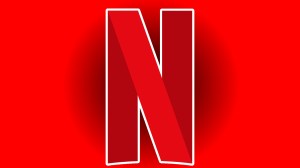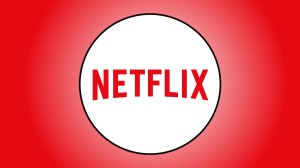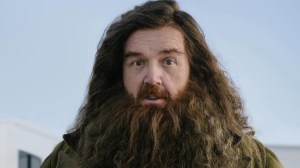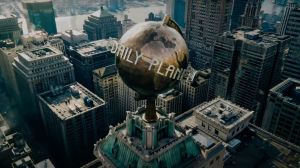Star Trek: The Motion Picture brought Star Trek to the big screen, but the Robert Wise-directed feature film was famously incomplete in its theatrical form. Due to distribution arrangements beyond his control, Wise had to cut post-production short, leaving planned special effects shots unfinished. In 2001, Paramount released Star Trek: The Motion Picture – The Director’s Edition onto DVD, presenting Wise’s completed version of the film for the first time. However, due to the way Star Trek: The Motion Picture — The Director’s Edition had been created at the time, it was not re-released on Blu-ray, instead reverting the film to its original theatrical version.
Videos by ComicBook.com
David Fein, a friend of Wise and producer who headed up the original Director’s Edition release, couldn’t let that stand. He led a new project to bring . This wasn’t a simple restoration though, as Fein used all of the modern tools at his disposal to enhance the film with new effects and other tweaks. He even managed to future-proof the movie, to an extent.
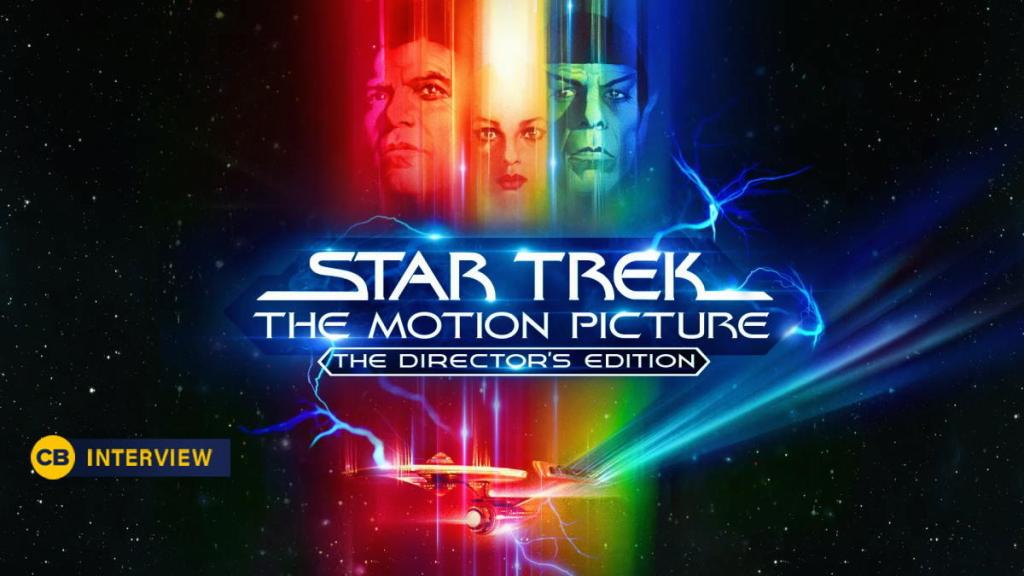
ComicBook.com had the opportunity to speak to Fein about what brought him back to Star Trek: The Motion Picture and what the future holds for the film. Here’s what he had to say:
Star Trek: The Motion Picture — The Director’s Edition was originally released about 20 years ago. What was the thing that motivated you and really convinced you that you should revisit it, update it again, and give it another release in 2022?
David Fein: Well, first of all, the 2001 edition that we did was always intended to be for film, and it was just the practicalities of the time that DVD was the format that the studio was producing all of their films with. Beyond the actual distribution, DVD was successful. That encouraged the DVD format. But there are things that you do differently on DVD or standard definition versus film, to begin with. And while we did approach the studio for film — again, it was wonderful that they gave us the opportunity to do it on standard definition — but it was always intended to go to film. For example, you can’t do color grading after the fact it’s always doing it beforehand when you have to have the elements that you’re working from to do the assembly.
But the biggest most obvious reason is that this is the finished film. The Director’s Edition was always intended to be the completed film because the film wasn’t finished originally, it was reopened in post. It wasn’t quite a restoration or a remastering as it more so was reopened in post and continuing the time restrictions not been there originally.
So why would we return to it? Well, the most obvious reason is when after a standard def they went to high def, and because there was no standard def format, from a standard def version of the film, the film reverted to the unfinished theatrical. So we couldn’t have the unfinished theatrical stand as Bob’s legacy film and have the film be reflected as that version, especially after we already showed what The Director’s Edition completion would be like. And then having the opportunity of both having the time and the evolutionary enhancements that have happened truly made it made us be able to make it what it is today.
Now, in addition to that, Robert Wise, before his passing, had me come over to his house and he sat down at this little nice coffee nook that he has had a long talk and he said, “I may not be here forever.” And I said, “I wish you are.” But, you know, “I need you to promise me that, no matter what, you will always work to make sure that The Director’s Edition lives on and that we eventually get our negative because my legacy can’t be back to the theatrical again. It has to be the film the way that it needed to be, not the theatrical.”
So while the theatrical was out there, and he did have cut on it, it was just the time concerns. It was very important to all of us that the film live on, and that’s what I said when I returned to the studio was we need to do it and it needs to be a new negative and digital equivalent. Once we do that, we can focus on any home entertainment or streaming or whatever releases because the film needed to have the same chance as any other film in the Paramount crow.
What was the experience like working on this Director’s Edition? How do you compare the experience to working on it the first time?
Absolutely nostalgic, and a tremendous feeling of deja vu — Did we do this before? I feel like we’re doing the same thing over again — but it was so much more powerful. One of the reasons why we were able to do the DVD originally was that the technological advances back, and my passions are technology and entertainment, enabled me to take the film and put it into a system back then where we could assemble everything in-house within our system, as well as working with Foundation Imaging to get the effects to come in and really fine-tune everything in-house.
Over the years, I was looking for that same technology to bring us to the point where we could do that in 4K And it actually took many years to reach the level where that would be possible. And that came about a little before the 40th anniversary of the film, where I saw that we could reach that same technological advancement where we would not be so limited creatively in reaching those goals, and still have the whole film at my fingertips to be able to work through shot-by-shot and adjus. Just about every shot in this film has had some type of alteration or slight adjustment to really amplify the story and make it work, and that’s because we were able to bring all the negative scans into the system.
And it’s unusual too because we ended up being the ultimate pandemic project because everybody worked at home. We didn’t have the internet back then, but now we had everybody working at home around the world doing visual effects and reviewing them online with Frame.io and making those choices of what we’re going to do and then putting it into the edit and then doing grain reduction throughout the whole film.
There’s even wonderful discoveries that we’ve had with the 35-millimeter negative, when you shot the film in 35-millimeter without audio, it doesn’t strike audio because that’s a process after when you’re making a film for presentation, so we discovered that the audio space had exposed picture. So at least at one place in the film, we were able to readjust the framing where it enhanced the story because we had that little extra space. There’s a place where there’s a crewman watching on that really amplified the feeling of the moment.
So the tools, are there the abilities are there to pull in such a better project. As I said earlier, being able to do the color work after the fact from the original negative. And I told Robert Wise years ago about John Lowry and how the discovery of HDR really would be something wonderful and something to use, and Bob instilled in me the insistence that don’t ever let history or limitation hold you back. So we weren’t going and working in the 1979 movie, I was working on a 2022 movie using the best tools that are available for the HDR range and that Atmos most mix that is so wonderful, really, really came home with the insistence that I focus on the story and every little bit of the story had to be enhanced to make it the best film that it could be, and I’m thrilled, absolutely thrilled, that the overall overwhelming consensus is that it works across the board, even though the edit is roughly the same as the one from 20 years ago where some people said, “Well there’s still some slows points. Now, the whole encompassing experience of the audio brings those high points so high that naturally, and this is the way you enjoy a film, it came down to a low of some of those long shots, but you needed that recovery time, so it balanced so wonderfully that I’m more excited than ever that the film works and it works well.
I know you said that you touched every shot, but I’m wondering if any particular alteration or addition stands out to you as a favorite? Or maybe even something that, if it had been the only enhancement you were able to make, would have made it worthwhile?
Robert Wise, in every one of his films, one of the things that I love about Bob’s films is that there is one specific, there’s many moments of brilliance, but there’s always one moment specifically that just grabs you and just, wow, that’s the moment that grabs you, in every one of his movies. Motion Picture Director’s Edition had one in 2001, and it’s not even scientifically possible, but I love it and that’s the Kirk reflection of the Enterprise. That used to be just a shot of Kirk, but the reflection of the Enterprise, so you’re seeing it out of focus as he’s looking at it, that’s the game. For him, that’s so much.
As for a change, I have a very minor one that I just love and it’s exactly what I was telling you about which was the adjusting frame. I’ll tell you where the shot was. There’s many, but this one just pops into my head because I was so happy about it, and that’s in the restored scene of Scotty talking to the other engineer where she asks him, “Why did the captain just order a self-destruct?” “Because he thinks, he hopes, that when we go up we’ll take the intruder with him.” It always looked like that it was the night shift on the enterprise. It was dark and one person walks by and a little conversation but it didn’t have the power that it really needed of we’re all going to die, potentially. It was there to a degree, but I felt that it needed more. And that’s when we looked at that extra 20% on the left hand side and there’s another engineer standing there working on the engine, and from 2001 version to this version, only possible because of the negative, we moved it over a bit — and there’s more on top and bottom, so there’s no games being played — moved him over a bit. So now when she says that, he’s like, “We’re gonna die?” He’s involved. More people are observing this and it really amplified the moment.
I’ll add to this by saying — and I keep teasing people with this because I won’t be specific about one of these two — amazingly, there’s two places in the film now where every time you watched the film before, it’s just whatever is on the surface is on the surface, this is what’s happening. There’s two places in the film now that I consider dream sequences, that what you’re seeing isn’t exactly what’s going on at that moment.
I’ll give you one example: in the previous version when Ilia is going to Checkov and saying I can stop his pain and she puts his hand on him and the music comes up a little as you feel that she’s doing something, you then go on. And all of that was, that’s one of the reasons why the V’ger probe grabbed her was she was special, and it added that she was something unique on the bridge. Now when she reaches out to him and touches him and the music comes up, it’s almost a magical moment where all the sound disappears and it’s just a connection between him and her, and what you’re seeing isn’t just what happened but what they’re thinking. It’s kind of their minds connect for that moment and then when he says “Thank you” everything comes back up. It was a surreal moment.
The only tip I’ll give you is, look for someplace that a color happens that doesn’t make any sense, because it didn’t happen… or did it? It’s neat because it actually worked to solve a problem that we had that I didn’t have a real way of getting around to resolve it, and we tried something, and what’s funny is everybody else that was working with me just knew we were adding some color to something and they didn’t quite get that my goal was that color had a purpose. I was so thrilled that now people are better with something that happens with the film, but they can’t explain why they’re better, and that’s because subliminally we’ve made it bigger and it’s such a wonderful point.
You’re going to have fans scouring the film looking for that moment.
If you tell them. The problem is that sometimes you don’t want people looking at something like that because then it becomes too obvious and it doesn’t become a subliminal, but it’s okay, everyone liked it.
Do you feel like at this point Star Trek: The Motion Picture is as close to the original vision for it as it can be? Or do you think there is more work you could do on it?
It is as close to being the perfect version of the film it can be today. There are of course a few things, at least one thing, that that I had to abandon that I wanted to keep doing. It’s small but there’s a few tweaks that I still would like to do at some point to fix certain things, not fix, but just to enhance and maybe perfect them a bit more.
I’ve said this recently, that there are some wonderful aspects of this that there’s a new technology that they think they found out that film, like HDR, may have also recorded light field technology, which means that there could be a 3D built into every film ever made. And there’s some study that says — some people are looking into it is what I’ve heard. This could be completely wrong.
But I will tell you the most exciting little tidbit about this: the film is more future proof than you’d imagine. And what I mean by that is HDR, which has dramatic brightness and dramatic darkness, I don’t know if you’ve noticed or if you had an HDR Dolby Vision system to watch it on, but the probe on the bridge is awfully bright because even the people on the bridge see how bright this is. Well, we rated that, graded that. Dolby Vision can go to 4000 nits of brightness and the average TV now, even the best of them is only 700 or 800. It’s graded to about 3500 nits. The disc, I made sure, has it graded to that high point. So 10 years down the line, if your system can get brighter, you’re going to see some scenes in some moments in the film that are really that much brighter. It’s the only film that I know of as well, which was perfect for HDR because of that and the meld at the end, that’s just going to improve over time as technology improves and you have it now. I’m excited that there’s so much more that could happen and, you know, at this rate, in this cycle, we’ll find out in 20 years.
Star Trek: The Motion Picture Director’s Edition is streaming now on Paramount+ and is available on 4k Blu-ray.

